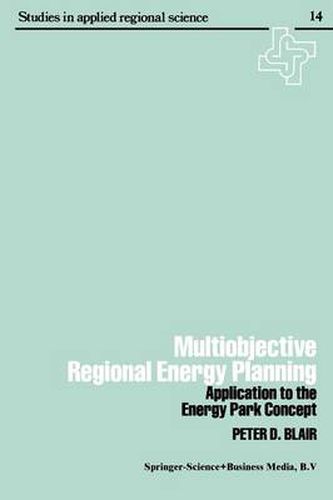Readings Newsletter
Become a Readings Member to make your shopping experience even easier.
Sign in or sign up for free!
You’re not far away from qualifying for FREE standard shipping within Australia
You’ve qualified for FREE standard shipping within Australia
The cart is loading…






This title is printed to order. This book may have been self-published. If so, we cannot guarantee the quality of the content. In the main most books will have gone through the editing process however some may not. We therefore suggest that you be aware of this before ordering this book. If in doubt check either the author or publisher’s details as we are unable to accept any returns unless they are faulty. Please contact us if you have any questions.
In recent years, the scope of energy planning has been broadened to include a variety of additional considerations such as socioeconomic and environ mental impacts. The fundamental purpose of energy planning is to formu late policy. Policy must be formulated in response to the interests which that policy would affect. A planning model called policy programming is developed in this work from basic concepts of hierarchical system theory and input-output analysis. The model is used in planning for energy park development in a specific region. I wish to acknowledge gratefully the suggestions of Thomas L. Saaty and Ronald Miller who commented at length on various drafts of the manu script. Support for this work was provided in part by the U. S. Energy Research and Development Administration, the U. S. Federal Energy Administration, and the University of Pennsylvania Energy Center. Peter Blair December, 1977 Contents Preface v PART ONE: SYSTEMS THEORY AND ENERGY PLANNING 1. Introduction 1. 1 Energy planning 3 1. 2 General approach to the problem 6 1. 3 Principal significance 7 2. Energy systeDM and planning 2. 1 The energy planning problem 10 2. 2 Energy planning and multiple objectives 14 2. 3 Structure of policy-making systems 18 2. 4 Energy-environment systems 21 2. 5 The eigenvalue prioritization model 27 3. Policy programming for multiobjective energy planning 3. 1 Introduction 38 3. 2 Definitions 38 3. 3 The modified hierarchical approach 41 3. 4 Goal programming 51 3.
$9.00 standard shipping within Australia
FREE standard shipping within Australia for orders over $100.00
Express & International shipping calculated at checkout
This title is printed to order. This book may have been self-published. If so, we cannot guarantee the quality of the content. In the main most books will have gone through the editing process however some may not. We therefore suggest that you be aware of this before ordering this book. If in doubt check either the author or publisher’s details as we are unable to accept any returns unless they are faulty. Please contact us if you have any questions.
In recent years, the scope of energy planning has been broadened to include a variety of additional considerations such as socioeconomic and environ mental impacts. The fundamental purpose of energy planning is to formu late policy. Policy must be formulated in response to the interests which that policy would affect. A planning model called policy programming is developed in this work from basic concepts of hierarchical system theory and input-output analysis. The model is used in planning for energy park development in a specific region. I wish to acknowledge gratefully the suggestions of Thomas L. Saaty and Ronald Miller who commented at length on various drafts of the manu script. Support for this work was provided in part by the U. S. Energy Research and Development Administration, the U. S. Federal Energy Administration, and the University of Pennsylvania Energy Center. Peter Blair December, 1977 Contents Preface v PART ONE: SYSTEMS THEORY AND ENERGY PLANNING 1. Introduction 1. 1 Energy planning 3 1. 2 General approach to the problem 6 1. 3 Principal significance 7 2. Energy systeDM and planning 2. 1 The energy planning problem 10 2. 2 Energy planning and multiple objectives 14 2. 3 Structure of policy-making systems 18 2. 4 Energy-environment systems 21 2. 5 The eigenvalue prioritization model 27 3. Policy programming for multiobjective energy planning 3. 1 Introduction 38 3. 2 Definitions 38 3. 3 The modified hierarchical approach 41 3. 4 Goal programming 51 3.